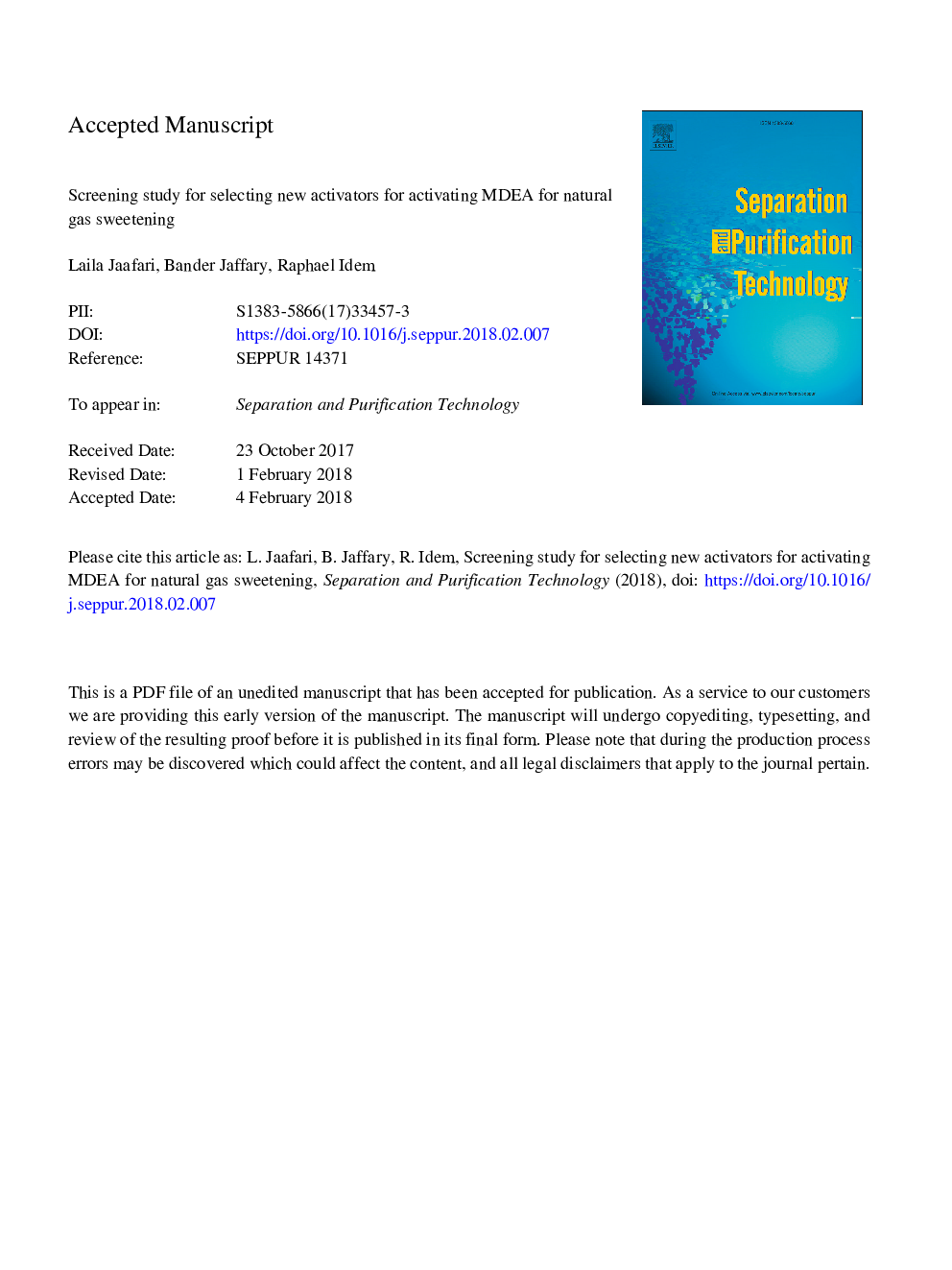| Article ID | Journal | Published Year | Pages | File Type |
|---|---|---|---|---|
| 7043864 | Separation and Purification Technology | 2018 | 39 Pages |
Abstract
This study focused on screening new activators for activating MDEA for natural gas sweetening. Accordingly, tetraethylenepentamine (TEPA) and polyethylenimine branched (PEI-B) were screened and compared with piperazine (PZ) in their performance for activating MDEA. The screening was carried out using absorption and desorption techniques. The comparison between the activated systems was based on the rich loading, lean loading, cyclic capacity, absorption rate, desorption rate and heat duty. The absorption and desorption temperatures were 40 and 100â¯Â°C, respectively at atmospheric pressure using 100% CO2. The concentration of MDEA was kept constant as 3â¯M in all the runs while changing the activator concentrations at 0.1, 0.2 and 0.3â¯M. The highest rich loading, lean loading, cyclic capacity, absorption and desorption rates were obtained with MDEA/PEI-B systems which has the highest number of amino groups per molecule as compared with TEPA and PZ systems. Furthermore, the lowest heat duty was also obtained with the MDEA/PEI-B system which is the only activator having tertiary amino groups in its structure. Furthermore, PEI-B and TEPA were superior to PZ in all the performance criteria even on the basis of per amino group in the amine molecule. However, TEPA was better than PEI-B because not all the amino groups of PEI-B were accessed by CO2, and so, were not all efficiently used due to the polymeric and compact nature of PEI-B structure as compared with the open and linear structure of TEPA. In conclusion, this study shows that PEI-B can replace PZ as an activator in a blend with MDEA for natural gas processing.
Related Topics
Physical Sciences and Engineering
Chemical Engineering
Filtration and Separation
Authors
Laila Jaafari, Bander Jaffary, Raphael Idem,
